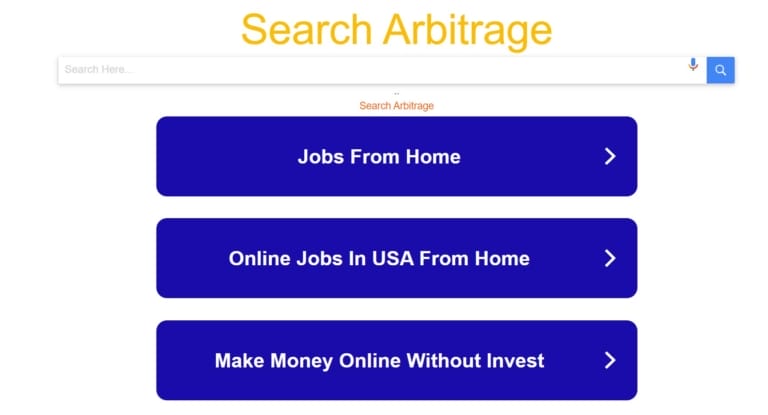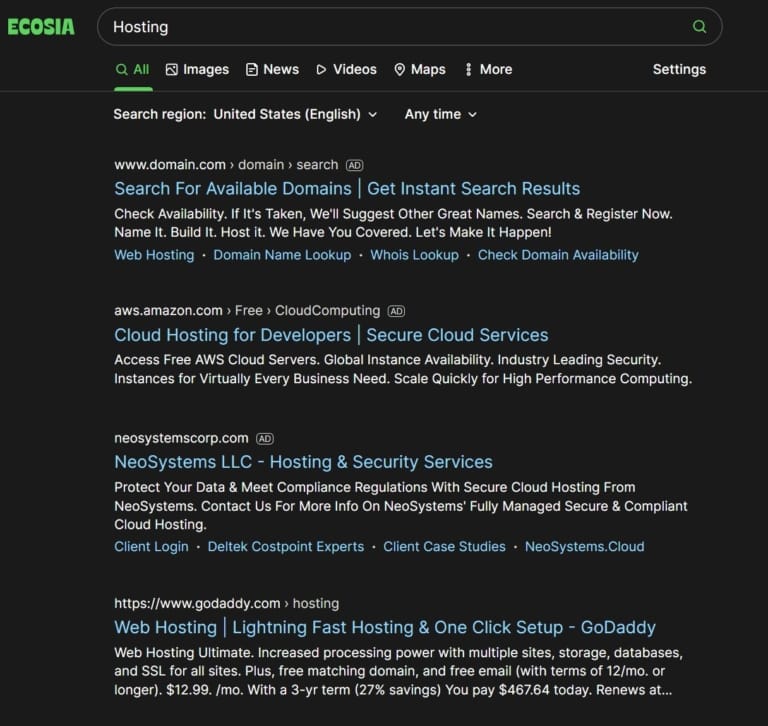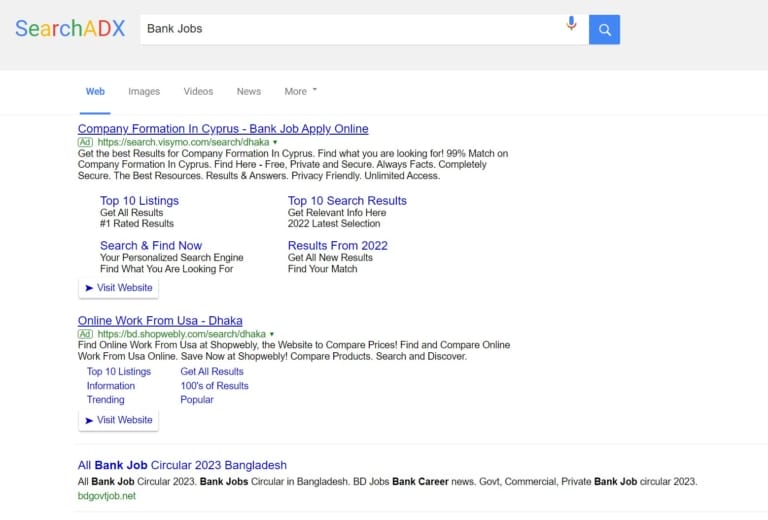
Native To Search Arbitrage is a powerful strategy that can help businesses maximize their revenue by leveraging the benefits of both native advertising and search advertising. In this comprehensive guide, we will explore the fundamentals of native advertising and search advertising, and how they can be combined to create a successful native to search arbitrage campaign. By understanding the basics, benefits, strategies, and common mistakes to avoid, you will be equipped with the knowledge to set up and optimize your own native to search arbitrage campaign.
Understanding the Basics of Native Advertising
Native advertising is a form of paid media where the ads seamlessly blend in with the content of the platform on which they are displayed. Unlike traditional display ads that are easily distinguishable as ads, native ads match the look and feel of the surrounding content, making them appear more natural and less intrusive. Native advertising can be found on various platforms such as social media sites, news websites, and mobile apps.
The key to successful native advertising lies in providing valuable content that aligns with the interests and preferences of the target audience. By offering relevant and engaging content, native ads can capture the attention of users and drive higher click-through rates. Native advertising also allows for more precise targeting options, enabling advertisers to reach their desired audience with greater accuracy.
Understanding the Basics of Search Advertising
Search advertising, on the other hand, is a form of online advertising where ads are displayed alongside search engine results. When a user enters a search query, relevant ads are shown based on keywords and bidding strategies. Search advertising is highly effective because it allows businesses to target users who are actively searching for products or services related to their industry.
The success of search advertising depends on selecting the right keywords, creating compelling ad copy, and optimizing landing pages for conversions. By understanding the search intent of users and aligning ad content with their needs, businesses can drive qualified traffic to their websites and increase the chances of conversions.
What is Native to Search Arbitrage?
Native To Search Arbitrage is the practice of driving traffic to a website through native advertising and monetizing that traffic by displaying search ads on the website. In simple terms, it involves buying low-cost native ads and redirecting the traffic to a website where search ads are displayed. When users click on the search ads, businesses earn revenue through the pay-per-click model.
The concept of native to search arbitrage is based on the difference in cost between native ads and search ads. Native ads typically have a lower cost per click compared to search ads, making it possible to generate profit by driving traffic from native ads and earning revenue from search ads. However, it requires careful planning, optimization, and monitoring to ensure that the revenue generated from search ads exceeds the cost of native ads.
Benefits of Native to Search Arbitrage
Native to search arbitrage offers several benefits for businesses looking to maximize their revenue:
- Cost-effective Advertising: Native ads often have a lower cost per click compared to search ads, allowing businesses to acquire traffic at a lower cost.
- Increased Revenue Potential: By monetizing the traffic through search ads, businesses have the opportunity to generate additional revenue beyond the cost of native ads.
- Diversification of Revenue Streams: Native To Search arbitrage allows businesses to diversify their revenue streams by leveraging both native advertising and search advertising.
- Targeted Advertising: Native To Search arbitrage enables businesses to reach their target audience through precise targeting options offered by native ad networks and search ad networks.
- Opportunity for Scale: With effective optimization and monitoring, businesses can scale their native to search arbitrage campaigns and drive significant amounts of traffic to their websites.
Native to Search Arbitrage Strategies
To maximize the revenue potential of your native to search arbitrage campaign, it is important to implement effective strategies. Here are some strategies to consider:
- Keyword Research: Conduct thorough keyword research to identify profitable keywords that align with the interests and search intent of your target audience.
- Ad Copy Optimization: Craft compelling ad copy that entices users to click on your native ads and visit your website. Use persuasive language and highlight the benefits of your products or services.
- Landing Page Optimization: Create optimized landing pages that are relevant to the native ads and provide a seamless user experience. Ensure that the landing pages are mobile-friendly and have clear call-to-action buttons.
- A/B Testing: Continuously test different variations of your native ads, ad copy, and landing pages to identify the most effective combinations. Use A/B testing tools to measure the performance of each variation and make data-driven decisions.
- Targeting and Segmentation: Leverage the targeting and segmentation options provided by native ad networks to reach your desired audience. Narrow down your targeting criteria based on demographics, interests, location, and behavior.
- Campaign Optimization: Regularly monitor the performance of your native to search arbitrage campaign and optimize it based on the data collected. Adjust your bidding strategies, keywords, and targeting options to maximize the return on investment.
By implementing these strategies and continuously optimizing your campaign, you can increase the chances of generating higher revenue through native to search arbitrage.
Finding Profitable Native Ad Networks
To embark on a successful native to search arbitrage campaign, it is crucial to find profitable native ad networks that offer high-quality traffic at a reasonable cost. Here are some native ad networks to consider:
- Taboola: Taboola is one of the largest native ad networks, providing access to a wide range of publishers and advertisers. It offers advanced targeting options and real-time analytics to optimize campaign performance.
- Outbrain: Outbrain is another popular native ad network that specializes in content discovery. It reaches a large audience across various platforms and provides detailed reporting and optimization tools.
- Revcontent: Revcontent focuses on delivering premium traffic and offers advanced targeting options to reach specific audience segments. It provides real-time reporting and optimization tools to maximize campaign performance.
- MGID: MGID is a native ad network that offers global reach and access to a diverse range of publishers. It provides detailed targeting options and optimization tools to improve campaign performance.
When selecting a native ad network, consider factors such as the quality of traffic, targeting options, reporting tools, and pricing models. It is also beneficial to test multiple networks and compare their performance to find the most profitable ones for your native to search arbitrage campaign.
Finding Profitable Search Ad Networks
In addition to finding profitable native ad networks, it is equally important to find profitable search ad networks to display ads on your website. Here are some search ad networks to consider:
- Google Ads: Google Ads is the largest search ad network, offering access to a massive audience and a wide range of targeting options. It provides detailed analytics and optimization tools to maximize the performance of your search ads.
- Microsoft Advertising: Formerly known as Bing Ads, Microsoft Advertising is another prominent search ad network that reaches a significant portion of the search engine market. It offers unique targeting options and robust reporting tools.
- Yahoo Gemini: Yahoo Gemini is a search ad network that combines search ads with native ads, providing access to a diverse audience. It offers targeting options based on demographics, interests, and search intent.
- Amazon Advertising: If you are selling products on Amazon, Amazon Advertising can be a lucrative option. It allows you to display ads on Amazon search results and product detail pages, reaching a highly engaged audience.
Consider factors such as reach, targeting options, pricing models, and reporting tools when choosing a search ad network. It is recommended to test multiple networks and analyze their performance to identify the most profitable ones for your native to search arbitrage campaign.
Setting Up Your Native to Search Arbitrage Campaign
Once you have identified profitable native ad networks and search ad networks, it’s time to set up your native-to-search arbitrage campaign. Here are the steps to follow:
- Define Your Goals: Clearly define your campaign goals, whether it is to generate revenue, increase brand awareness, or drive website traffic. Having clear goals will guide your strategy and optimization efforts.
- Choose the Right Native Ad Network: Select a native ad network that aligns with your campaign goals, offers the targeting options you need, and provides quality traffic. Sign up for an account and familiarize yourself with the platform.
- Create Compelling Native Ads: Craft engaging native ads that capture the attention of your target audience. Use persuasive language, compelling visuals, and clear call-to-action buttons to entice users to click on your ads.
- Set Up Conversion Tracking: Implement conversion tracking to measure the performance of your native to search arbitrage campaign. Use tracking pixels or event codes to track conversions and optimize your campaign accordingly.
- Choose the Right Search Ad Network: Select a search ad network that complements your native ads and offers relevant search ads to display on your website. Sign up for an account and configure the necessary settings.
- Implement Search Ad Tags: Install search ad tags on your website to display search ads. Follow the instructions provided by the search ad network to properly implement the tags and ensure accurate tracking of clicks and conversions.
- Monitor and Optimize: Regularly monitor the performance of your native to search arbitrage campaign. Analyze the data collected from both the native ad network and the search ad network to identify areas for improvement and make necessary optimizations.
Monitoring and Optimizing Your Native to Search Arbitrage Campaign
Monitoring and optimizing your native to-search arbitrage campaign is crucial to ensure its success. Here are some key metrics to monitor and optimization strategies to consider:
- Click-Through Rate (CTR): Monitor the CTR of your native ads and search ads. If the CTR is low, consider optimizing your ad copy, visuals, or targeting options to improve engagement.
- Cost Per Click (CPC): Keep an eye on the CPC of your native ads and search ads. If the CPC is high, explore ways to reduce costs, such as refining your targeting criteria or adjusting your bidding strategies.
- Conversion Rate: Measure the conversion rate of your landing pages and the performance of your search ads in driving conversions. If the conversion rate is low, optimize your landing pages and experiment with different ad variations to improve results.
- Return on Investment (ROI): Calculate the ROI of your native to search arbitrage campaign to ensure it is generating profitable results. If the ROI is not satisfactory, review your campaign strategies and make necessary adjustments to increase revenue and reduce costs.
- Split Testing: Continuously split test different variations of your native ads, ad copy, landing pages, and search ads. Compare the performance of each variation and implement the most successful ones to improve campaign performance.
By consistently monitoring the performance of your campaign and making data-driven optimizations, you can maximize the revenue potential of your native to search arbitrage campaign.
Common Mistakes to Avoid in Native to Search Arbitrage
While native-to-search arbitrage can be a lucrative revenue-generating strategy, it is important to avoid common mistakes that can hinder your success. Here are some mistakes to avoid:
- Insufficient Keyword Research: Failing to conduct thorough keyword research can result in targeting the wrong audience or missing out on profitable keywords. Invest time in understanding the search intent of your target audience and identifying relevant keywords.
- Poor Ad Copy and Visuals: Neglecting the quality of your ad copy and visuals can lead to low engagement and click-through rates. Craft compelling ad copy and choose visually appealing images or videos that entice users to click on your ads.
- Lack of Optimization: Neglecting to regularly monitor and optimize your campaign can lead to missed opportunities and wasted budget. Continuously analyze the performance of your native ads, search ads, and landing pages, and make necessary adjustments to improve results.
- Ignoring Analytics and Data: Failing to leverage the data provided by native ad networks and search ad networks can prevent you from making informed decisions. Use analytics and reporting tools to gain insights into the performance of your campaign and uncover areas for improvement.
- Overlooking Compliance Guidelines: Native ad networks and search ad networks have specific guidelines and policies that must be followed. Ignoring these guidelines can result in ad disapproval or account suspension. Familiarize yourself with the policies and ensure your ads comply with them.
By avoiding these common mistakes and implementing best practices, you can increase the chances of running a successful native-to-search arbitrage campaign.
Case Studies of Successful Natives to Search Arbitrage Campaigns
To gain a deeper understanding of how native-to-search arbitrage can be effectively implemented, let’s explore some case studies of successful campaigns:
- Case Study 1: E-commerce Store
A popular e-commerce store implemented a native-to-search arbitrage campaign to drive traffic to their website and increase sales. They used a combination of Taboola as their native ad network and Google Ads as their search ad network. By carefully selecting profitable keywords, optimizing their ad copy and landing pages, and continuously monitoring and optimizing their campaign, they were able to generate a significant increase in revenue.
- Case Study 2: News Website
A news website leveraged native to-search arbitrage to monetize its traffic and increase its advertising revenue. They partnered with Outbrain as their native ad network and Yahoo Gemini as their search ad network. Through effective targeting, optimized ad copy, and continuous optimization, they were able to achieve a substantial increase in ad revenue while maintaining a positive user experience.
These case studies highlight the potential of native to-search arbitrage when implemented strategically and with careful monitoring and optimization.
Native to Search Arbitrage Tools and Resources
To support your native to search arbitrage efforts, here are some tools and resources that can be helpful:
- Google Analytics: Google Analytics provides comprehensive website analytics and conversion tracking capabilities. It offers valuable insights into the performance of your native search arbitrage campaign and helps you make data-driven decisions.
- Optimizely: Optimizely is an A/B testing platform that allows you to test different variations of your native ads, ad copy, landing pages, and search ads. It provides statistical insights and helps you identify the best-performing variations.
- Native Ad Spy Tools: Tools like Anstrex and AdPlexity allow you to spy on your competitors’ native ads and gain inspiration for your own campaigns. They provide insights into ad creatives, landing pages, and targeting strategies.
- Search Ad Bid Management Tools: Bid management tools like Optmyzr and WordStream help you optimize your search
From Search Results to Revenue: Exploring the Power of Search Feed Monetization
Case Studies on Successful Search Feed Monetization
Top Benefits of Search Feed Monetization for Publishers and Developers
Native to Search Arbitrage: Frequently Asked Questions:
1. What is Native to Search Arbitrage?
Native to Search Arbitrage is an online advertising strategy that involves buying traffic from one source, such as search engines, at a lower cost and redirecting it to another destination where it can be monetized at a higher rate.
2. What are the two types of offers in search feed arbitrage?
The two types of offers in search feed arbitrage are 1-Click Flow and 2-Click Flow. These offers differ in terms of user interaction and conversion payouts.
3. How does Native to Search Arbitrage work?
Native to Search Arbitrage works by leveraging the price difference between buying traffic and monetizing it at a higher rate. Advertisers buy low-cost traffic from search engines and redirect it to websites or landing pages where they can generate revenue through ads, products, or services.
4. What is the role of trackers in Native to Search Arbitrage?
Trackers play a crucial role in Native to Search Arbitrage by providing accurate tracking, automation, and multi-geo targeting. They help advertisers optimize their campaigns and maximize their returns on investment. FunnelFlux and Voluum are recommended trackers for this purpose.
5. How can I set up a Native to Search Arbitrage campaign?
To set up a Native to Search Arbitrage campaign, you need to perform keyword research, select the right traffic source, create compelling ads, and use a tracker for accurate tracking and optimization. It’s also important to consider the user experience and maintain good SEO practices.
6. What are some benefits of Native to Search Arbitrage?
Some benefits of Native to Search Arbitrage include the potential for higher revenue generation, cost-effective traffic acquisition, and the ability to monetize low-cost traffic at a higher rate. It can be a profitable strategy when implemented correctly.
7. Is Native to Search Arbitrage suitable for all businesses?
Native to Search Arbitrage can be suitable for various businesses, but it is important to assess the feasibility and potential profitability based on the specific niche, target audience, and competition. It may not be suitable for businesses that heavily rely on organic traffic or have limited advertising budgets.
8. Are there any potential pitfalls of Native to Search Arbitrage?
Yes, there are potential pitfalls of Native to Search Arbitrage. These include the risk of low-quality traffic, ad fraud, ad blockers, compliance issues, and the need for continuous optimization and monitoring. Advertisers need to stay updated with industry trends and regulations to mitigate these risks.
9. How can I optimize my Native to Search Arbitrage campaigns?
To optimize your Native to Search Arbitrage campaigns, you can leverage the data provided by trackers, perform A/B testing, refine your targeting strategies, improve your ad creatives, and constantly analyze and tweak your campaigns based on performance metrics.
10. Can I use Native to Search Arbitrage for affiliate marketing?
Yes, Native to Search Arbitrage can be used effectively for affiliate marketing. By driving low-cost traffic to affiliate offers, advertisers can potentially earn higher commissions and increase their profitability. However, it’s important to comply with affiliate network guidelines and optimize for conversions.
11. How should I select the right traffic source for Native to Search Arbitrage?
When selecting a traffic source for Native to Search Arbitrage, consider factors such as the relevance of the traffic to your niche, the cost per click, the volume of traffic available, and the ad formats supported. It’s recommended to start with smaller budgets and gradually scale up based on performance.
12. What are some best practices for maintaining a positive user experience in Native to Search Arbitrage?
Maintaining a positive user experience is crucial in Native to Search Arbitrage. Some best practices include ensuring fast website loading times, providing relevant and valuable content, optimizing landing pages for mobile devices, and avoiding intrusive ads or excessive pop-ups.
13. Can I target multiple geographies in Native to Search Arbitrage?
Yes, you can target multiple geographies in Native to Search Arbitrage. Trackers like FunnelFlux and Voluum allow for multi-geo targeting, which enables advertisers to optimize their campaigns based on the performance of different regions and target audiences.
14. How can I track the performance of my Native to Search Arbitrage campaigns?
You can track the performance of your Native to Search Arbitrage campaigns by using trackers like FunnelFlux and Voluum. These trackers provide detailed analytics and reporting, allowing you to monitor key metrics such as click-through rates, conversion rates, and return on investment.
15. Should I use AdSense arbitrage in Native to Search Arbitrage?
AdSense arbitrage, which involves buying traffic and monetizing it through Google AdSense, can be a way to generate quick money. However, it’s important to also focus on maintaining good SEO and organic traffic to ensure the long-term success of your website.
16. What are some common metrics to track in Native to Search Arbitrage?
Some common metrics to track in Native to Search Arbitrage include click-through rate (CTR), conversion rate, cost per click (CPC), cost per acquisition (CPA), return on investment (ROI), and revenue per visitor (RPV). These metrics help in assessing the performance and profitability of your campaigns.
17. Can I use Native to Search Arbitrage with other online advertising strategies?
Yes, Native to Search Arbitrage can be combined with other online advertising strategies such as display advertising, social media advertising, or affiliate marketing. This allows advertisers to diversify their traffic sources and maximize their revenue potential.
18. How long does it take to see results with Native to Search Arbitrage?
The time it takes to see results with Native to Search Arbitrage can vary depending on various factors such as the competitiveness of your niche, the effectiveness of your campaigns, and the optimization efforts. It’s important to be patient, and continuously monitor and optimize your campaigns for better results.
19. Are there any legal considerations in Native to Search Arbitrage?
Yes, there are legal considerations in Native to Search Arbitrage. It’s important to comply with advertising regulations, respect copyright and trademark laws, and adhere to the terms and policies of the advertising platforms and affiliate networks you are using. Non-compliance can result in penalties or account suspensions.
20. Can I use Native to Search Arbitrage for local businesses?
Yes, Native to Search Arbitrage can be used for local businesses. By targeting specific geographic areas and relevant keywords, advertisers can drive local traffic to their websites or landing pages and generate leads or sales for local businesses.
21. How much budget do I need to start with Native to Search Arbitrage?
The budget required to start with Native to Search Arbitrage can vary depending on factors such as the cost per click, the volume of traffic you want to drive, and your profit margins. It’s recommended to start with a smaller budget and gradually scale up based on the performance and profitability of your campaigns.
22. Are there any alternatives to FunnelFlux and Voluum for tracking Native to Search Arbitrage campaigns?
While FunnelFlux and Voluum are recommended trackers for Native to Search Arbitrage, there are other alternatives available in the market, such as RedTrack, ThriveTracker, and ClickMagick. It’s important to choose a tracker that suits your specific needs and budget.
23. Can I use Native to Search Arbitrage for lead generation?
Yes, Native to Search Arbitrage can be used effectively for lead generation. By driving targeted traffic to lead capture pages or opt-in forms, advertisers can generate leads and build their email lists for further nurturing and conversion. It’s important to have compelling offers and persuasive landing pages for better results.
24. Are there any specific industries or niches where Native to Search Arbitrage works best?
Native to Search Arbitrage can work well in various industries and niches, but some industries where it has been successful include finance, insurance, health, and e-commerce. It’s important to research and analyze the competition and profitability potential of your chosen industry or niche before implementing this strategy.
25. Can I use Native to Search Arbitrage for mobile app promotion?
Yes, Native to Search Arbitrage can be used for mobile app promotion. By driving targeted traffic to app download pages or app stores, advertisers can increase app installations and user engagement. It’s important to have compelling ad creatives and optimize the app landing pages for better conversions.
26. How can I deal with low-quality traffic in Native to Search Arbitrage?
To deal with low-quality traffic in Native to Search Arbitrage, you can use traffic filters and blacklists to exclude irrelevant or suspicious traffic sources. It’s also important to constantly monitor your campaigns and analyze the performance metrics to identify and eliminate sources of low-quality traffic.
27. Can I use Native to Search Arbitrage for e-commerce businesses?
Yes, Native to Search Arbitrage can be used effectively for e-commerce businesses. By driving targeted traffic to product pages or online stores, advertisers can increase sales and revenue. It’s important to have persuasive product descriptions, high-quality images, and an optimized checkout process for better conversions.
28. What are some key strategies for success in Native to Search Arbitrage?
Some key strategies for success in Native to Search Arbitrage include continuous optimization, split testing, targeting relevant keywords, analyzing and learning from competitors, monitoring industry trends, and staying updated with advertising platforms’ policies and guidelines.





